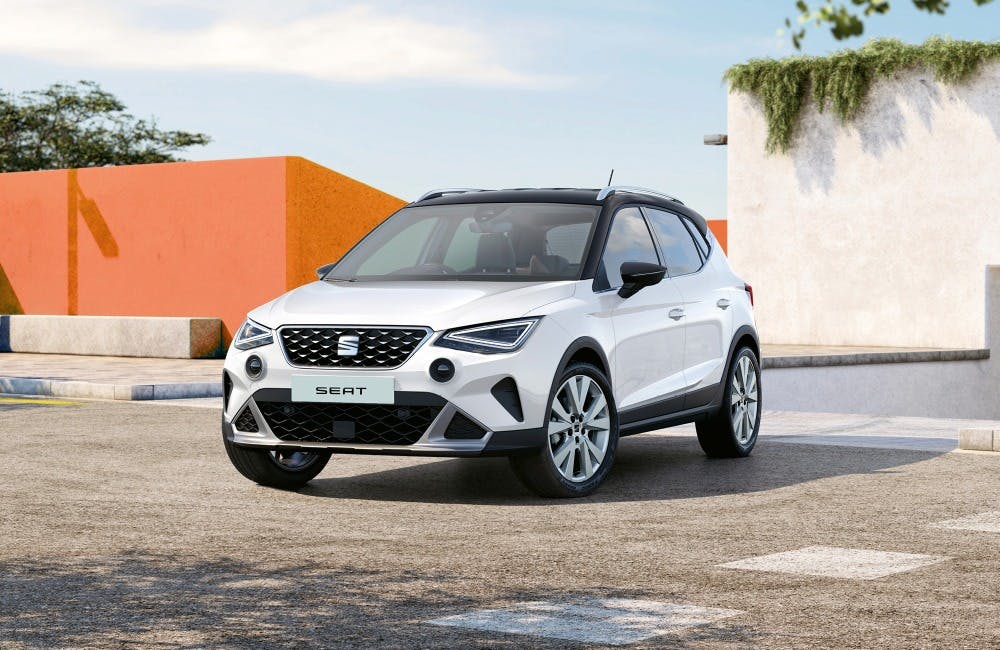A CNG CAR AS SEEN FROM THE INSIDE

-
- Gas powered vehicles feature a single internal combustion engine that operates with gas by default
- The tanks are sealed and reach half the pressure they can actually withstand
- For easy refuelling there are two filler necks beneath the fuel door, one for gas and the other for petrol
They are ecological and run on a fuel that is less expensive and just as safe as petrol or diesel; but do we really know how natural gas powered cars work? Andrew Shepherd and Antonio Calvo, experts on compressed natural gas (CNG) at SEAT, tell us all about how these vehicles operate:
-Dual filler necks behind the fuel door: You can readily see the two filler necks for both fuel types when you open the fuel door. “Refuelling is the same as on a petrol or diesel car. The filler neck is in the same location and it takes practically the same amount of time. And since the refuelling is done with natural gas, it doesn’t smell or drip”, explains SEAT director of sustainable mobility Antonio Calvo.
-Sealed tanks: They are located beneath the boot floor, where you would normally find the spare tyre, and are made of high resistance steel with an anticorrosion treatment. A set of solenoid safety valves seal the gas inside and only open when the ignition is turned on. Their condition gets certified every 4 years and the components have been tested to withstand extreme conditions: “The tanks on this car resist 200 bars of pressure, but they’re made to withstand more than double that, so safety is completely guaranteed”, says Antonio.
-Two fuel types and a single engine: CNG cars are equipped with a latest generation internal combustion engine that works indistinctly with compressed natural gas or petrol. By default, the car drives on gas until it is depleted, and automatically switches over to petrol. The driver cannot tell when the shift takes place, as the engine’s performance is exactly the same with both fuel types. “The engine features many specifically reinforced components for burning natural gas. It complies with the most stringent emissions regulations, and the ECO label issued by the Directorate General of Traffic to cars fuelled with CNG is evidence of this”, explains SEAT CNG product manager Andrew Shepherd.
-Shock proof: CNG vehicles comply with the most stringent industry standards. During the entire development stage, they undergo a series of tests, including crash testing, to guarantee they are completely safe. “In the most extreme case of high temperatures caused by fire, the gas would be released constantly in a controlled manner thanks to the thermal fuses located in each tank, thus preventing an excessive pressure build-up” says Andrew.
-Electronically controlled and adaptable pressure: The natural gas is housed in the tanks at around 200 bars, but it gets injected in the engine at a pressure that does not exceed 10 bars. A two-stage pressure regulator located in the engine bay reduces the pressure and ensures an optimum gas supply, and the engine control module monitors this electronic regulator at all times.
-An indicator displays the fuel type in use: The feeling at the wheel is the same whether you drive with natural gas or petrol, so the only way the driver can tell the difference is by looking at the indicator on the instrument panel. When it’s on, the car is operating with natural gas; when it’s off it means the car is in petrol mode. In addition, two further indicators display the level of each fuel type and the trip computer provides information such as consumption and how much range is left.
-CNG cars are just like any other: Andrew Shepherd explains that “gas fuelled cars are designed, made and certified according to the industry’s highest quality standards”. “There are no differences either during their production or when driving them. I like to say that there is absolutely nothing unusual about a CNG powered car, and that it’s just as safe and reliable as all the rest”, concludes Antonio Calvo.
Notes to the editors:
SEAT is the only company that designs, develops, manufactures and markets cars in Spain. A member of the Volkswagen Group, the multinational has its headquarters in Martorell (Barcelona), exporting 80% of its vehicles, and is present in over 80 countries on all five continents. In 2017, SEAT obtained an after tax profit of 281 million euros, sold close to 470,000 cars and achieved a record turnover of more than 9.5 billion euros.
The SEAT Group employs more than 15,000 professionals and has three production centres – Barcelona, El Prat de Llobregat and Martorell, where it manufactures the highly successful Ibiza, Arona and Leon. Additionally, the company produces the Ateca and the Toledo in the Czech Republic, the Alhambra in Portugal and the Mii in Slovakia.
The multinational has a Technical Centre, which operates as a knowledge hub that brings together 1,000 engineers who are focussed on developing innovation for Spain’s largest industrial investor in R&D. SEAT already features the latest connectivity technology in its vehicle range and is currently engaged in the company’s global digitalisation process to promote the mobility of the future.
-
-
-






